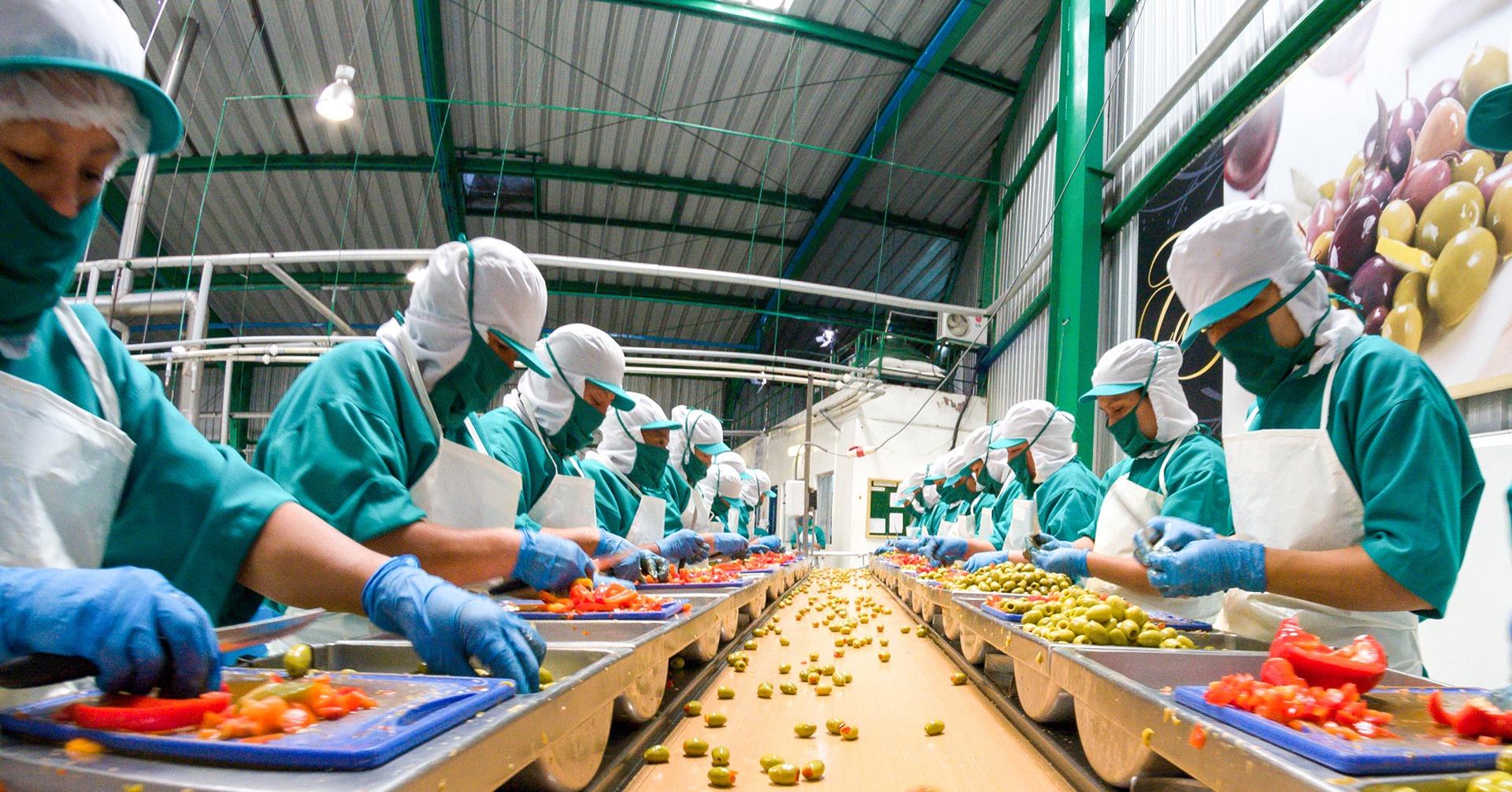The popularity of plant-based products continues to rise, with the global plant-based protein market size projected to grow from $12.2 billion in 2022 to $17.4 billion by 2027.
As a food manufacturer, you might be wondering how you can jump on this growing trend and position your business for success in the future. In this blog, we look at three key steps you can build into your long-term plant-based strategy.
- Reassess and improve your food labels
- Keep your pricing competitive
- Offer a best-in-class customer experience
1. Reassess and improve your food labels
The pandemic has refocused consumers minds when it comes to the food they buy. In fact, recent research estimates the global functional ingredients market will reach £137.3million by 2025 ($100million).
However, even though there’s a feel-good factor around plant-based products at the moment, it doesn’t mean consumers are going to give them a free pass when it comes to their ingredients. A recent report from Kerry’s found that more than 60% of consumers read a product’s ingredient statement and nutritional panel when buying plant-based products.
And in the UK, the introduction of Natasha’s Law has placed further demand on food businesses to ensure all ingredients and allergens are displayed correctly.

This is driving demand for cleaner, shorter labels on products with fewer and more familiar sounding ingredients. With the right technology, you can sustain regulatory compliance by collecting and managing data from several sources throughout your business processes and supply chain.
This not only gives you full control and visibility of your operations, but also helps minimise the risk of product recalls as a result of incorrect or missing information from labelling.
With food-specific software, you can benefit from features such as:
- Quality management, allowing you to assess and record quality metrics in your operations and constantly drive process and quality improvements
- Process manufacturing, (which also includes product development planning, batch manufacturing and recipe management). This ensures an efficient, quality-controlled production process
- Allergen management, which reduces the risk of cross-contamination and gives you visibility into allergens across multiple sources
- Lot tracking, allowing you to act quickly and efficiently in the event of a recall (or to prevent one)
- Country of origin tracking and labelling, which makes it easier to comply with consumer labelling and market laws regulated by the FDA
Discover more about the advantages of food-specific software by listening to our podcast episode here.

2. Keep your pricing competitive
Trying to keep prices in line with the well-established meat industry has been a challenge for plant-based leaders. In 2021, insure4sport carried out research into 37 chilled vegan ready meals and vegan alternatives at UK supermarkets, and found that two-thirds were more expensive than their non-plant-based counterparts.
However, new research from ProVeg Netherlands has suggested the price gap is shrinking. In 2022, meat-free chicken pieces are only €0.13 more expensive per 100g than their animal-based counterparts. The price in minced meat has fallen too – from €0.24 to €0.06 – in the same period.
Keeping your base pricing consistent on your plant-based products can help you get a foothold in the market and build lasting relationships with your customers. However, with costs continuing to soar for food businesses, it’s crucial you remain on the lookout for other ways to save money in order to remain profitable and protect margins.
Let’s look at some cost saving strategies:
Automate your processes
Staffing costs will always make up a large part of your spending. However, you can maximise the output of the staff the you already have by automating simple tasks, which allows your workers to focus on more critical actions.
Tools like QR code scanners can help you collect information quickly and remove the risk of human error, such as typos. Food specific solutions can also automate your shift, production and sanitation scheduling, freeing up your staff to concentrate on proactive planning and continuous improvement, which can both lead to savings in the long run.
You can read more about the benefits of automation in the food industry by clicking here.

Leverage the power of data analytics
The amount of data being generated in the food industry is increasing every year, and those who can tap into the right form of data can navigate the market quicker, make accurate future predictions and adjust their business accordingly to fit market trends.
Without the correct tools, it could take hours (or even days) to pull together the data you need. And by the time you’ve processed the information into an easy-to-read format, most of it will already be out-of-date.
Food-specific software can integrate with multiple systems, giving your teams a single view of the business. Reports can be automatically generated in real-time, which not only ensures you’ll have the most up-to-date numbers at hand, but also a deeper understanding of what is/isn’t working so you can rectify problems as soon as they arise.
Move to the cloud
Needless to say, the pre-cloud era was costly. It gladly consumed resources and labour for the maintenance that was required to keep servers in tip top shape. The cloud era, though still complex, brings huge benefits; increases in storage, bandwidth, power and architectural flexibility for (in most cases) a fraction of what the on-premises data centres cost.
And by working with a reputable cloud vendor like Columbus, you can be safe in the knowledge that you’ll always have access to the data you need.
We can:
- Monitor your system, keep track of updates and automatically release patches when necessary
- Guarantee 99.7% uptime and resolve issues through 24/7 standby resources
- Take care of your infrastructure management so your team can focus on more important, strategic projects that drive business improvement
Read more about our managed services offering by clicking on the button below.
3. Offer a best-in-class customer experience
Today’s B2B customers want their business buying experiences to be like their personal ones. They want to be able to research information online, compare offers and request pricing – all at their own leisure. Plus, with digital marketplaces available to consumers at a touch of a button, it’s made it even harder for companies to truly differentiate themselves.
This has forced food industry leaders to revisit their customer experience strategies, as a way to gain a competitive edge in the market. With 86% of buyers willing to pay more for a great customer experience, there’s a clear incentive for plant-based leaders to follow suit.

Here’s how you can improve your customer experience (CX):
Create more personalised experiences
Consumers today see through generic messaging – not only is it cold and detached, but it also makes it clear that they’re just one of your several customers.
With the help of technology such as a customer relationship management (CRM) system, you can collect and view relevant data which makes it easier to personalise the messaging of your plant-based products. This means you can better meet the specific wants and needs of your customers, helping you turn more prospects into leads.
Empower your customers to help themselves
67% of customers today prefer self-service over speaking to a company representative. By investing in a detailed knowledge base, you can ensure your customers have the right resources available to them so they can solve problems themselves.
Increase your customer service channels
Just like their personal buying experiences, B2B customers want B2B businesses to be available instantly through several channels. Each customer service channel can meet customer needs in different ways, so it’s important you understand:
- How your customers currently communicate with you
- Where there’s communication gaps in your organisation

The following customer service channels can help serve your customers better:
- Phone – not every demographic is comfortable with writing an email or speaking to a chatbot. In fact, 36% of people over the age of 56 rank phone calls as the top preferred communication channel. B2B phone support can also be important for more secure support, such as queries on payment and billing
- Social media – with so many social media channels to choose from, it’s important you focus on the channel your audience is already most active and develop a presence there. Spreading yourself too thinly across multiple platforms will make it harder to respond quickly to customer queries, potentially harming your online image
- Video chat – this can be a valuable tool for your customers that need highly technical support. For example, the ability to share screens and browse together helps eliminates the back-and-forth nature of email and solve customer issues in one session
We recently sat down with Microsoft to discuss the changing landscape of B2B customer service and the strategies businesses can undertake to improve their customer service offerings.
Watch it now by clicking on the button below.
Explore what's driving the plant-based industry today
With the plant-based industry experiencing tremendous growth in recent years, how can food manufacturers keep up with the changes as a result of this? In our infographic, we explore:
- How the plant-based industry opens up opportunities for investment and growth
- The main trends contributing towards the rise of plant-based diets
- The steps food manufacturers can take to incorporate plant-based products and sustainable practices within their supply chain
Interested? Get your copy below.



